
PicoShare is a minimalist service that allows you to share files easily. Direct download links: PicoShare gives you a direct download link you can share with anyone. They can view or download the file with no ads or signups. No file restrictions: Unlike sites like Imgur, Vimeo, or SoundCloud that only allow you to share specific types of files, PicoShare lets you share any file of any size. No resizing/re-encoding: If you upload media like images, video, or audio, PicoShare never forces you to wait on re-encoding. You get a direct download link as soon as you upload the file, and PicoShare never resizes or re-encodes your file. In this step by step guide I will show you how to install PicoShare on your Synology NAS using Docker.
STEP 1
Please Support My work by Making a Donation.
STEP 2
Install Container Manager via Synology “Package Center”. If you run an older DSM version (under 7.2), search for Docker instead of Container Manager.
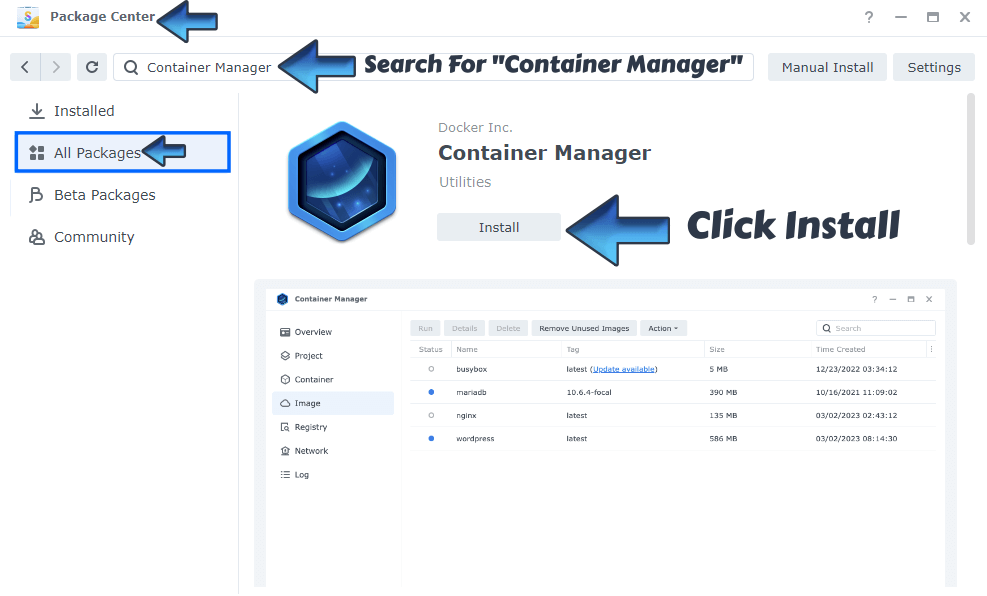
STEP 3
Make sure you have a synology.me Wildcard Certificate. Follow my guide to get a Wildcard Certificate. If you already have a synology.me Wildcard certificate, skip this STEP.
STEP 4
Go to Control Panel / Login Portal / Advanced Tab / click Reverse Proxy. Follow the instructions in the image below.
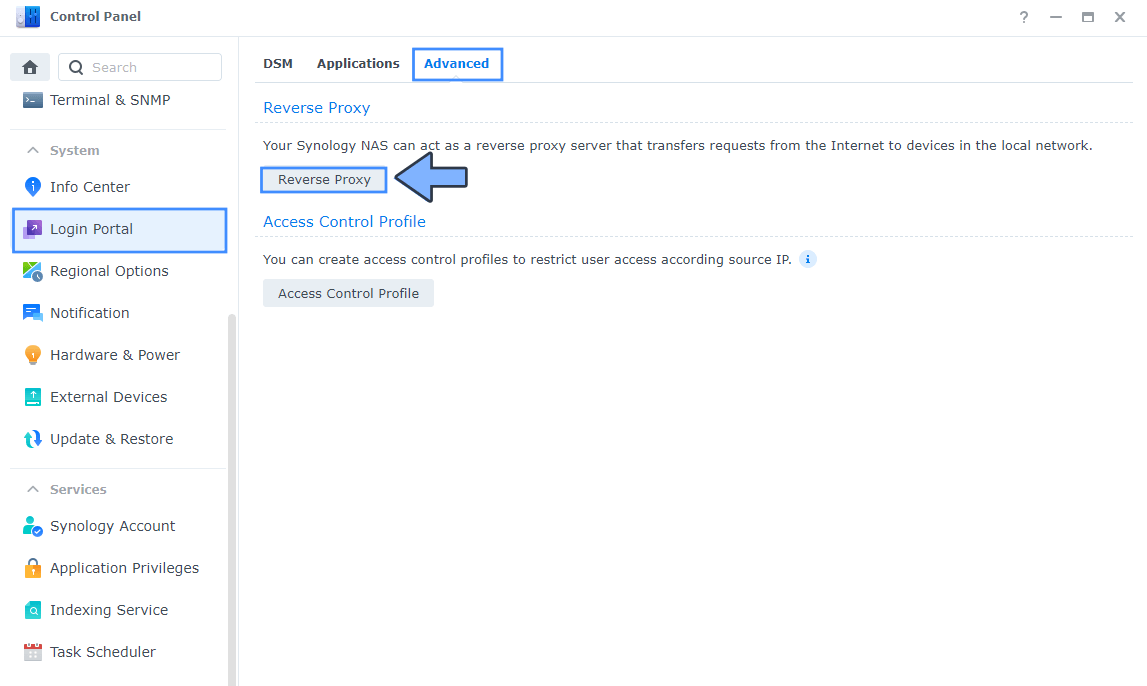
STEP 5
Now click the “Create” button. Follow the instructions in the image below.
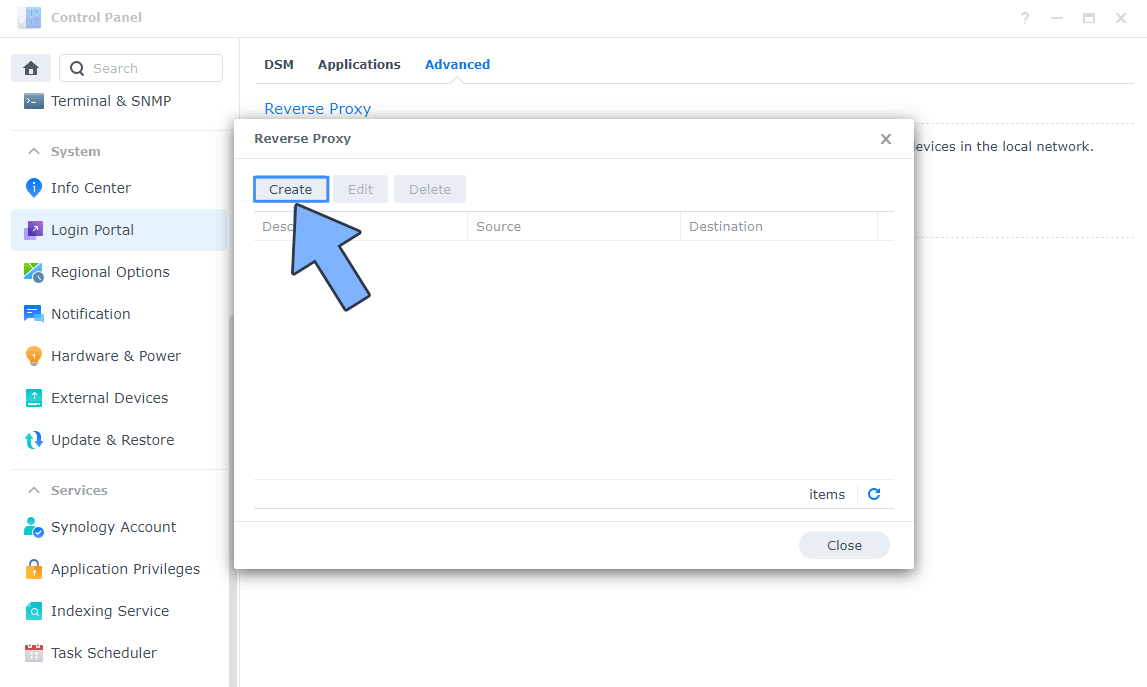
STEP 6
After you click the Create button, the window below will open. Follow the instructions in the image below.
On the General area, set the Reverse Proxy Name description: type in PicoShare. After that, add the following instructions:
Source:
Protocol: HTTPS
Hostname: picoshare.yourname.synology.me
Port: 443
Check Enable HSTS
Destination:
Protocol: HTTP
Hostname: localhost
Port: 3200
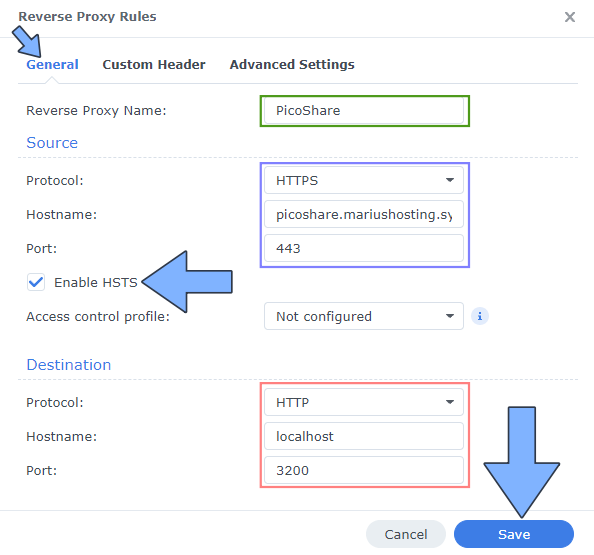
STEP 7
On the Reverse Proxy Rules click the Custom Header tab. Click Create and then, from the drop-down menu, click WebSocket. After you click on WebSocket, two Header Names and two Values will be automatically added. Click Save. Follow the instructions in the image below.

STEP 8
Go to Control Panel / Network / Connectivity / Check Enable HTTP/2 then click Apply. Follow the instructions in the image below.
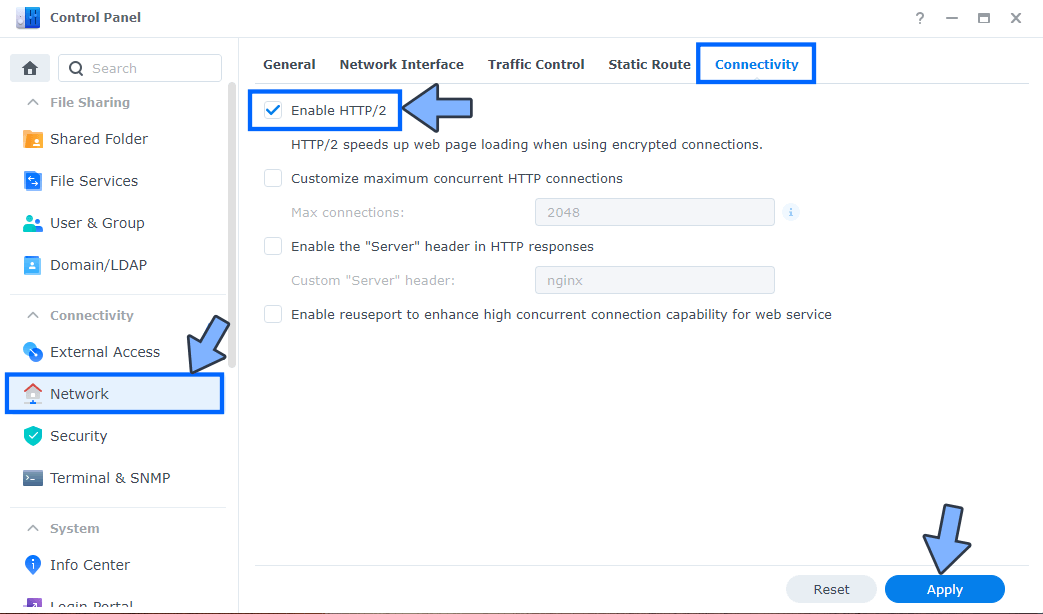
STEP 9
Go to Control Panel / Security / Advanced tab/ Check Enable HTTP Compression then click Apply. Follow the instructions in the image below.
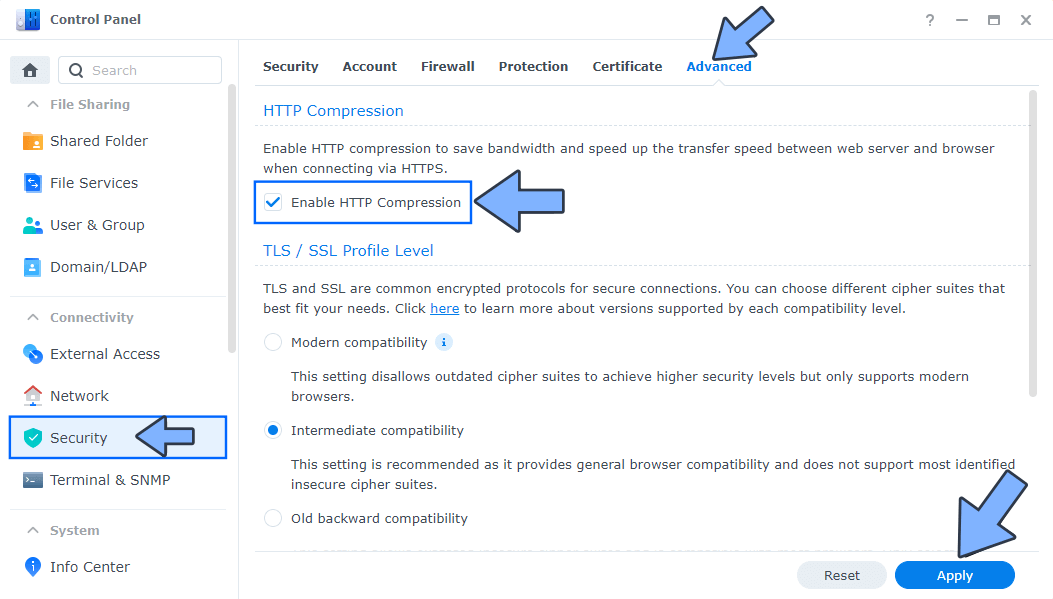
STEP 10
Go to File Station and open the docker folder. Inside the docker folder, create one new folder and name it picoshare. Follow the instructions in the image below.
Note: Be careful to enter only lowercase, not uppercase letters.
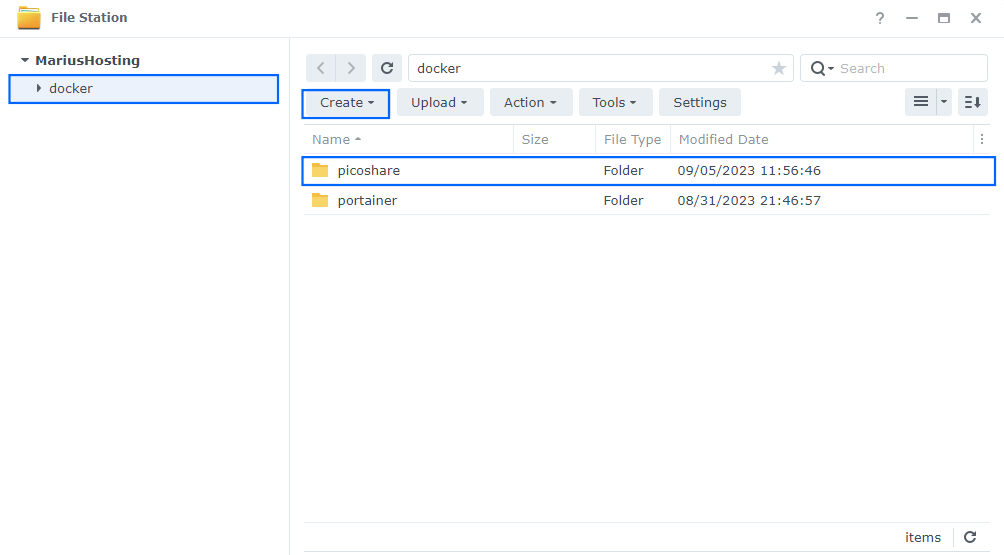
STEP 11
Go to Control Panel / Task Scheduler / Create / Scheduled Task / User-defined script. Follow the instructions in the image below.
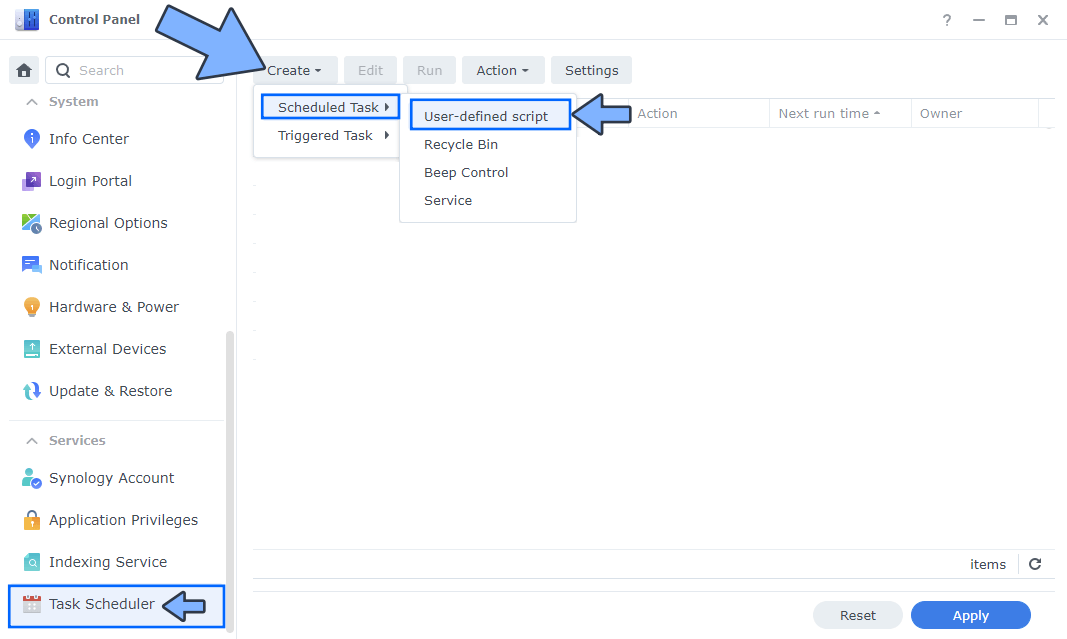
STEP 12
Once you click on User-defined script, a new window will open. Follow the instructions below:
- General: In the Task field type in Install PicoShare. Uncheck the “Enabled” option. Select root User.
- Schedule: Select Run on the following date then select “Do not repeat“.
- Task Settings: Check “Send run details by email“, add your email then copy paste the code below in the Run command area. After that, click OK.
docker run -d --name=picoshare \
-p 3200:3200 \
-e PORT=3200 \
-e PS_SHARED_SECRET=mariushosting \
-v /volume1/docker/picoshare:/data \
--restart always \
mtlynch/picoshareNote: Before you paste the code above in the Run command area, change the value for PS_SHARED_SECRET and add your own password. mariushosting is an example for a password. You have to insert your own password.
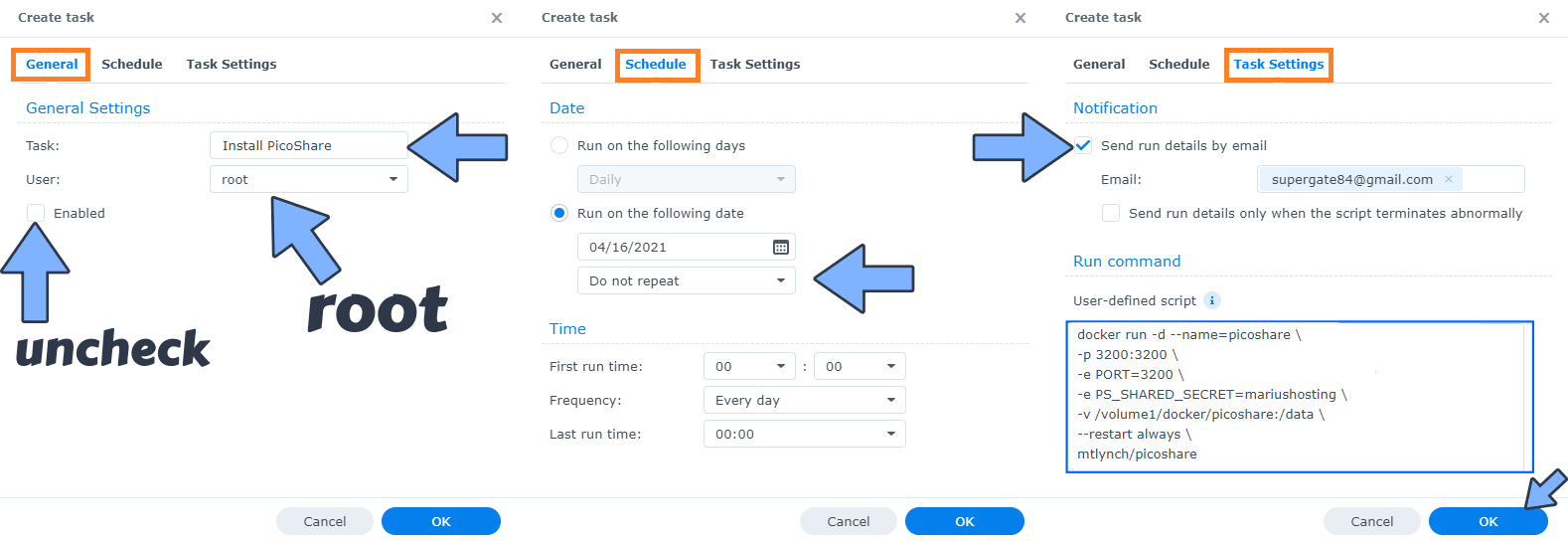
STEP 13
After you click OK on STEP 12 a new warning pop up window will open. Click OK.
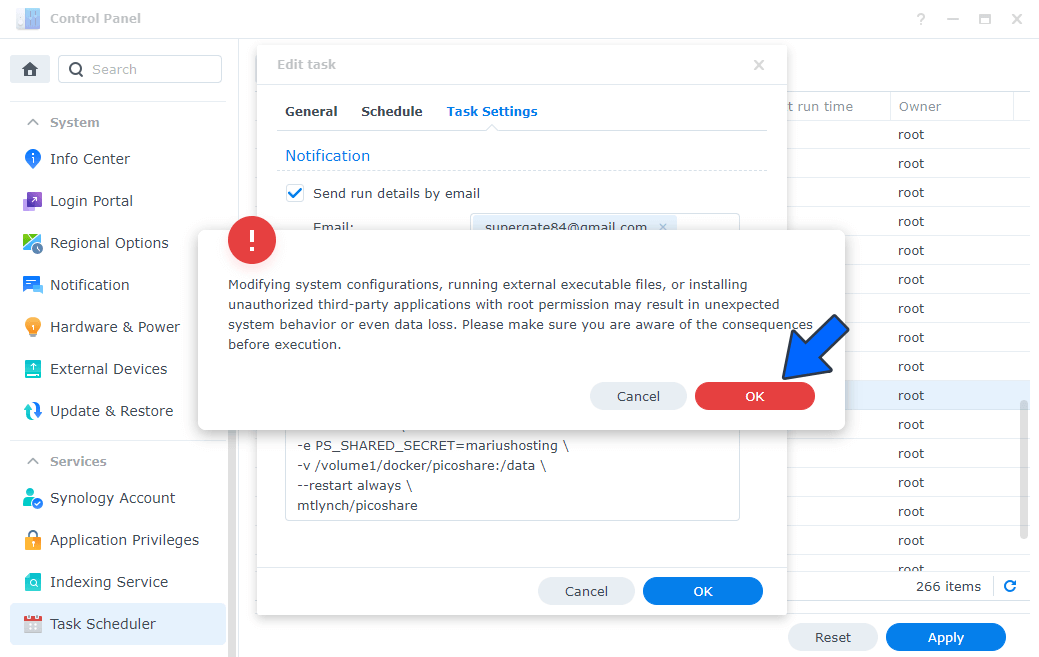
After you click OK, type in your DSM Password then click Submit. Follow the instructions in the image below.
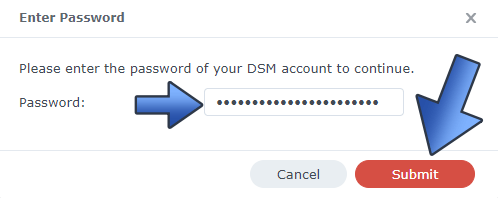
STEP 14
After you click Submit on STEP 13, select your “Install PicoShare” Task then click the “Run” tab. You will be asked to run Install PicoShare – click OK. Follow the instructions in the image below.
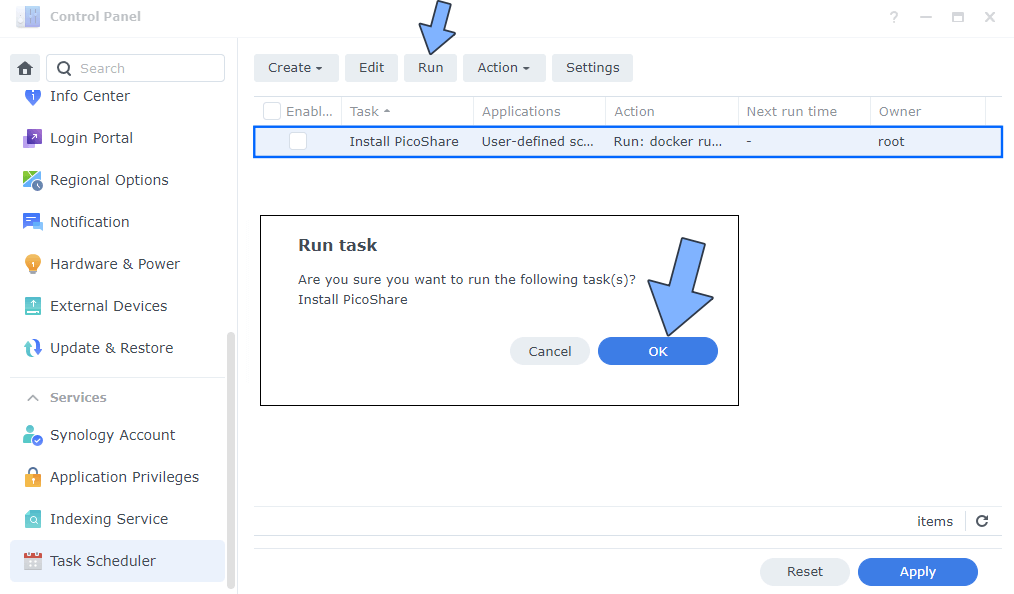
STEP 15
🟢Please Support My work by Making a Donation. Almost 99,9% of the people that install something using my guides forget to support my work, or just ignore STEP 1. I’ve been very honest about this aspect of my work since the beginning: I don’t run any ADS, I don’t require subscriptions, paid or otherwise, I don’t collect IPs, emails, and I don’t have any referral links from Amazon or other merchants. I also don’t have any POP-UPs or COOKIES. I have repeatedly been told over the years how much I have contributed to the community. It’s something I love doing and have been honest about my passion since the beginning. But I also Need The Community to Support me Back to be able to continue doing this work.
STEP 16
The installation process can take up to a few seconds/minutes. It will depend on your Internet speed connection. Now open your browser and type in your HTTPS/SSL certificate like this https://picoshare.yourname.synology.me In my case it’s https://picoshare.mariushosting.synology.me If everything goes right, you will see the PicoShare homepage. At the top right of the page click Log in. Follow the instructions in the image below.
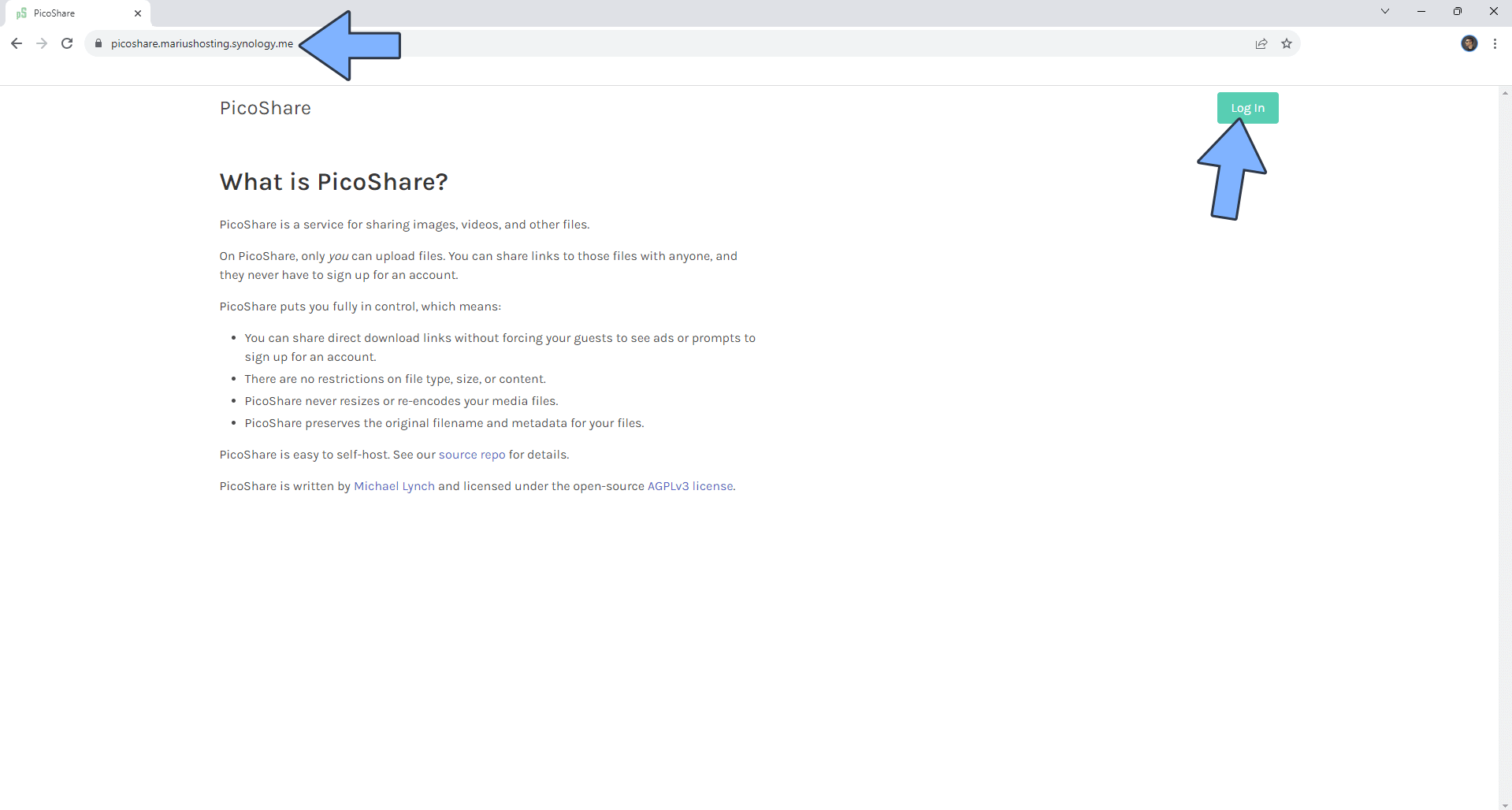
STEP 17
Type in the password that you have previously created at STEP 12 then click Authenticate. Follow the instructions in the image below.
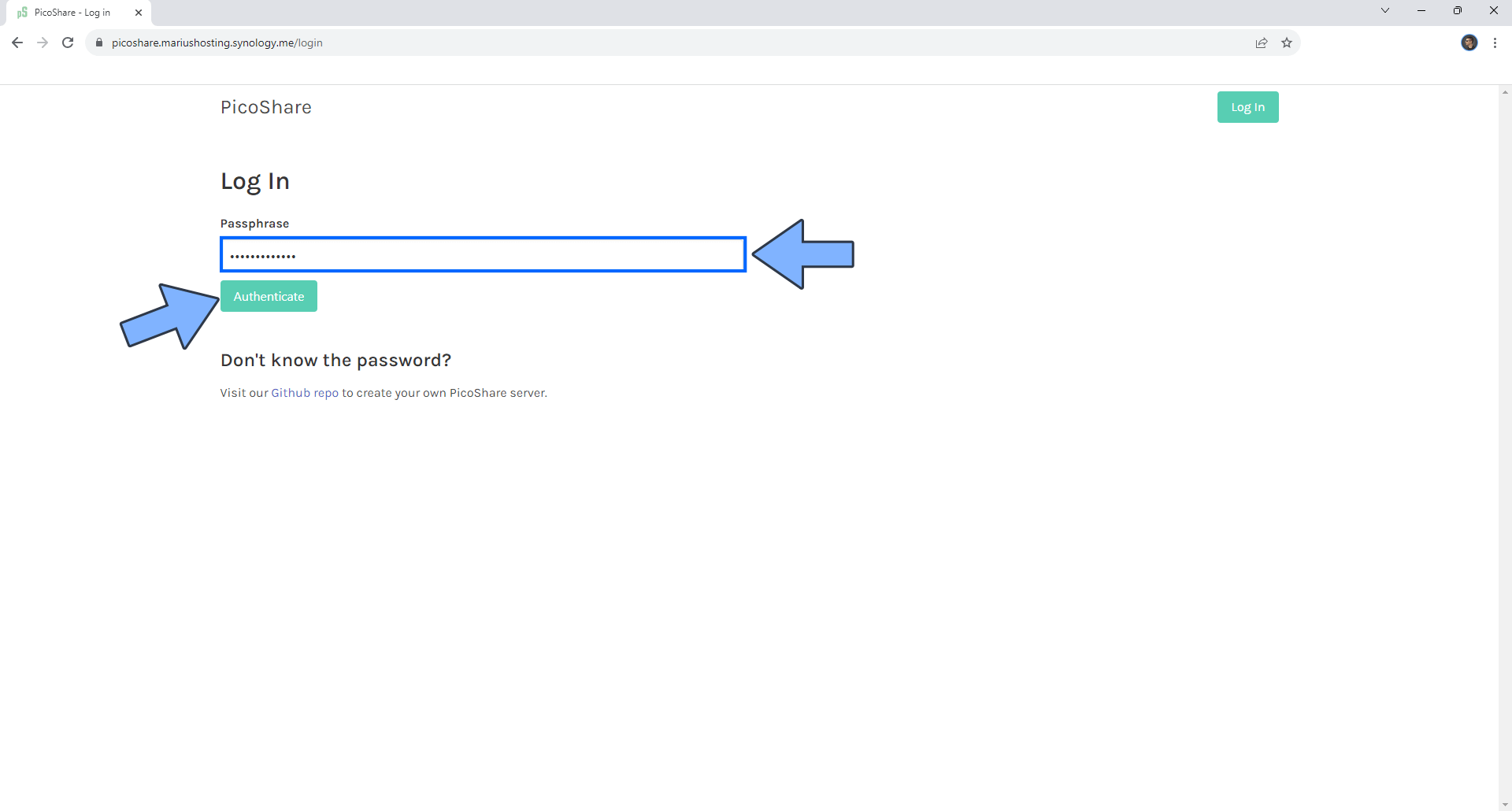
STEP 18
Upload any file from your computer or paste something in the appropriate area. Select the link availability (expiration time). Follow the instructions in the image below.

STEP 19
Share the autogenerated link with your friends or family. Follow the instructions in the image below.
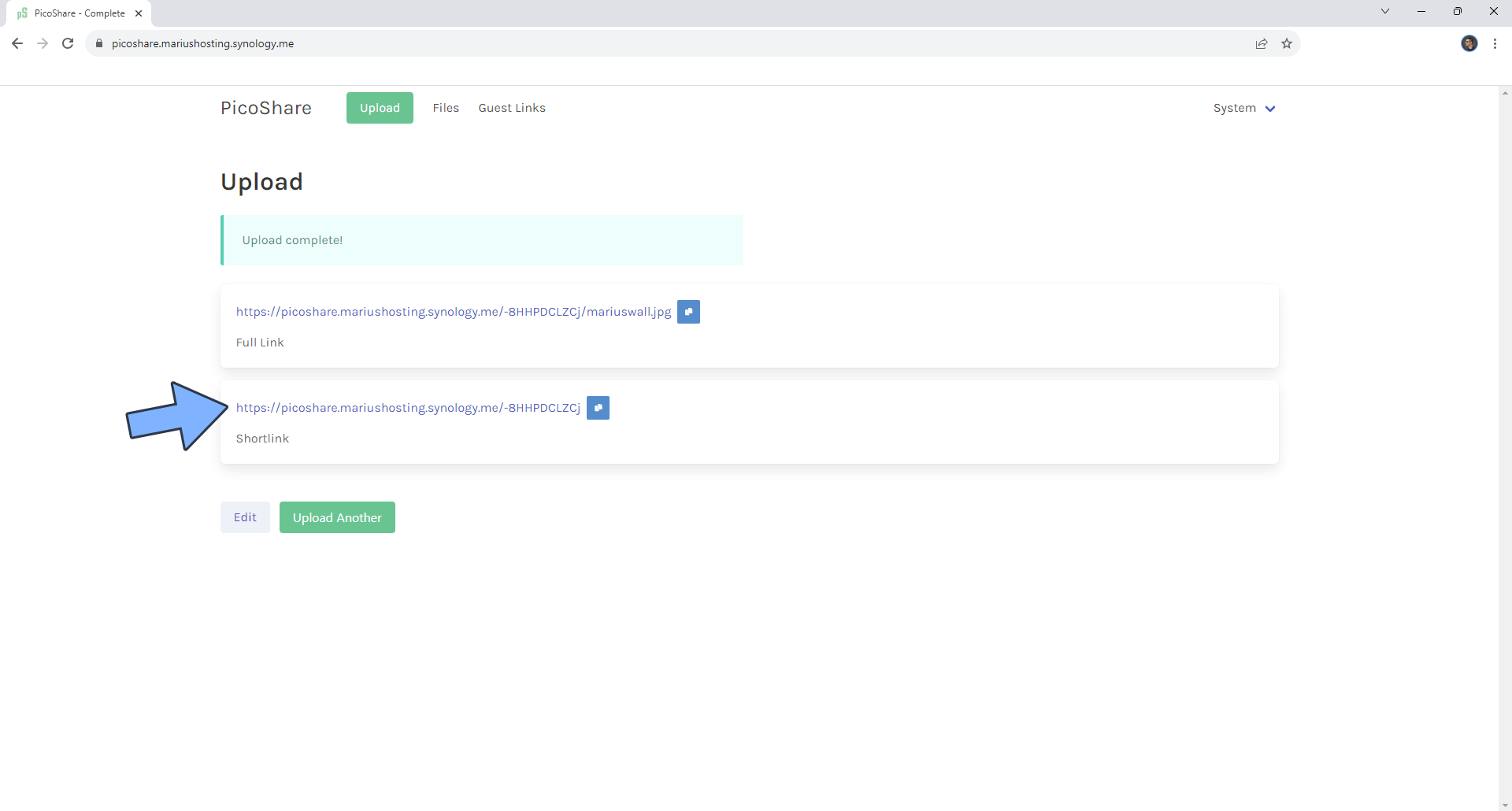
STEP 20
Take a look at the link in a new browser window.

Enjoy PicoShare!
Note: Can I run Docker on my Synology NAS? See the supported models.
Note: How to Back Up Docker Containers on your Synology NAS.
Note: Find out how to update the PicoShare container with the latest image.
Note: How to Free Disk Space on Your NAS if You Run Docker.
Note: How to Schedule Start & Stop For Docker Containers.
Note: How to Activate Email Notifications.
Note: How to Add Access Control Profile on Your NAS.
Note: How to Change Docker Containers Restart Policy.
Note: How to Use Docker Containers With VPN.
Note: Convert Docker Run Into Docker Compose.
Note: How to Clean Docker.
Note: How to Clean Docker Automatically.
Note: Best Practices When Using Docker and DDNS.
Note: Some Docker Containers Need WebSocket.
Note: Find out the Best NAS Models For Docker.
Note: Activate Gmail SMTP For Docker Containers.
This post was updated on Saturday / January 18th, 2025 at 12:39 AM
